On the network shown in the figure, the DHCP server function is enabled on GEO/0/0 of R2, and the address pool is an interface address pool. When GEO/0/0 and GEO/0/1 of R1 function as DHCP clients, only one interface can obtain an IP address by default.

MPLS supports nesting of multiple labels. After receiving an MPLS packet, a device first processes the label next to the Layer 2 header, that is, the top MPLS label.
On the OSPF network shown in the figure, the cost values of links are marked. OSPF IP FRR is enabled on R1, and the maximum load-balancing 8 command is configured in the OSPF process. If a service passes through the path R1 → R5 → R3 to reach 10.0.3.3/32, which of the following is the backup outbound interface for the service?
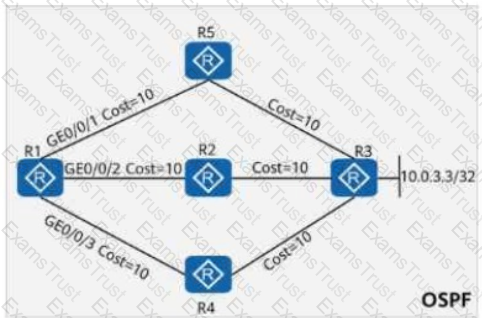
On the OSPFv3 network shown in the figure:
Area 1 is a stub area
Area 2 is a common area
Area 3 is an NSSA
The IPv6 address of Loopback0 on R6 is 2000::6/128.
The router ID of each router is 10.0.X.X, where X is the router number.
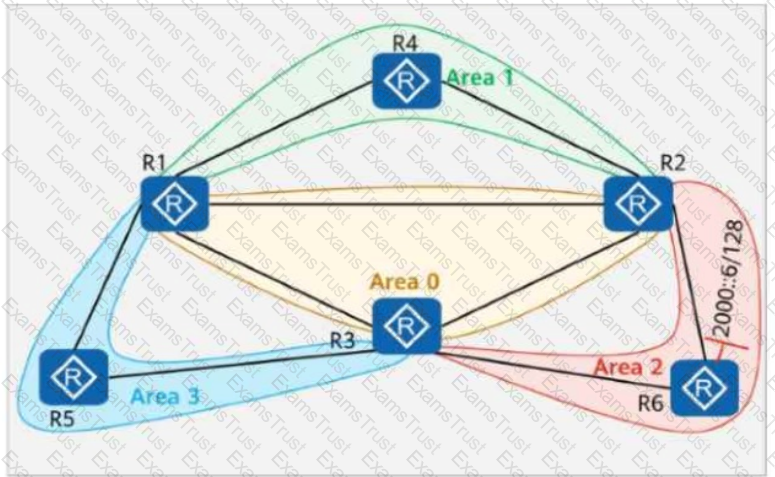
Which of the following statements are true?
On the OSPF network shown in the figure, R1 and R2 use OSPF to communicate with each other through Loopback0. In addition:
MPLS LDP is enabled on R1 and R2.
The LDP transport address is the IP address of Loopback0.
A network engineer finds that an LDP session cannot be established between R1 and R2 and runs diagnostic commands (shown in the figure) to locate the fault.
Given this, which of the following are possible causes of the fault?

Options:
On the network shown in the figure, EBGP peer relationships are established between ASs through directly connected interfaces.
OSPF is deployed in AS 65456 (with OSPF disabled on interconnected interfaces between ASs).
R4 and R5 use Loopback0 to establish iBGP peer relationships with R6.
The IP address of Loopback0 on each router is 10.0.X.X/32, and the router ID is 10.0.X.X, where X is the number of the router.
R1, R2, and R3 import the external route 192.168.1.0/24 into BGP through the import-route command.
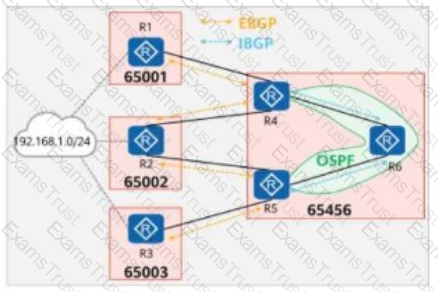
Which of the following statements are true?
On the OSPF network shown in the figure, area 1 and area 2 are common areas. The IP address of Loopback0 on R5 is 10.0.5.5/32, and OSPF is enabled on this interface. If the abr-summary 10.0.5.0 255.255.255.0 command is run in area 2 (where R1 resides), which of the following routers have the route 10.0.5.0/24 in their routing tables?
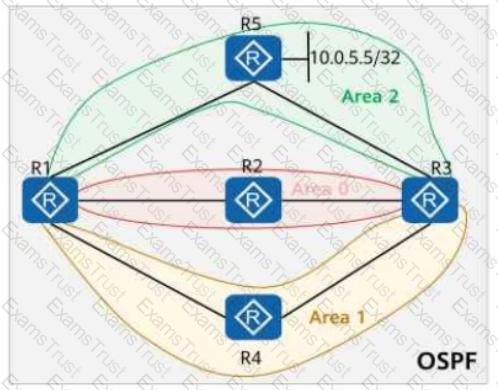
As shown in the figure, an administrator enables port isolation on the switch’s interfaces connected to terminals.

In this scenario, which of the following IP addresses cannot be pinged from PC1?
The figure shows the file information on R2. When a network engineer runs the dir | exclude 1 command to view the file information, which of the following files will be displayed?
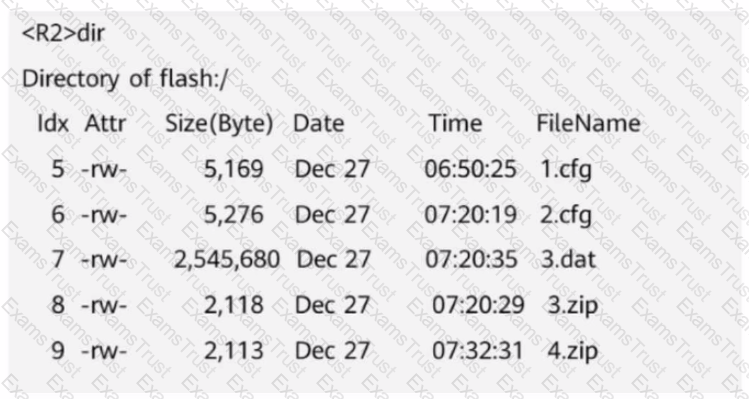
On the OSPF network shown in the figure, a network engineer finds that R1 and R2 have the same router ID, and both have imported default routes (with the default-route-advertise always command configured). Given this, which of the following statements is false?
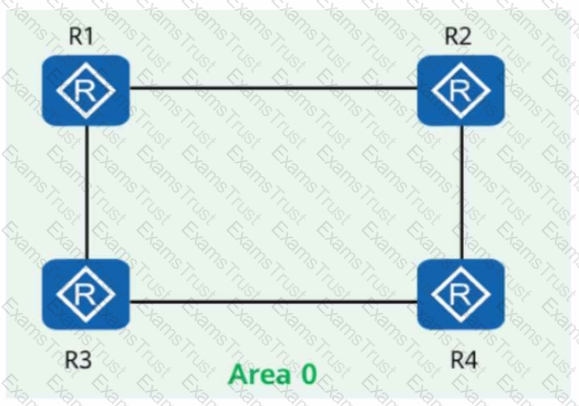
In the figure, the company wants to ensure secure communication between the headquarters and branch, and isolate the R&D areas from non-R&D areas, without changing the current network deployment.
To meet this requirement, an administrator deploys BGP/MPLS IP VPN on the network.
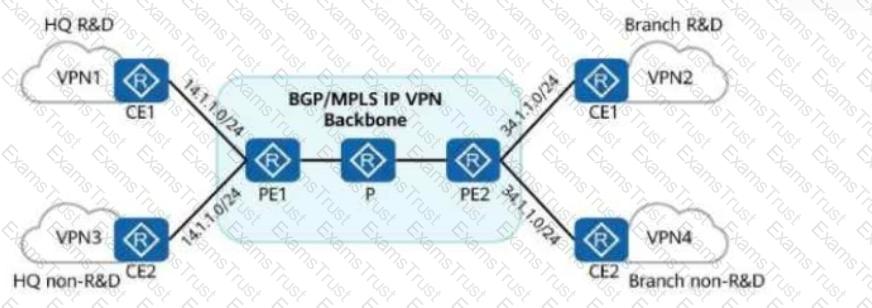
Which of the following statements are true?
On the IS-IS IPv6 network shown in the figure:
Multi-topology is enabled on all routers.
The IPv6 address of Loopback0 on R4 is 2000::4/128.
The command ipv6 summary 2000::/64 level-2 is configured in the IS-IS processes of R2 and R1.
The command ipv6 import-route isis level-2 into level-1 is configured in the IS-IS processes of R1, R2, and R3.
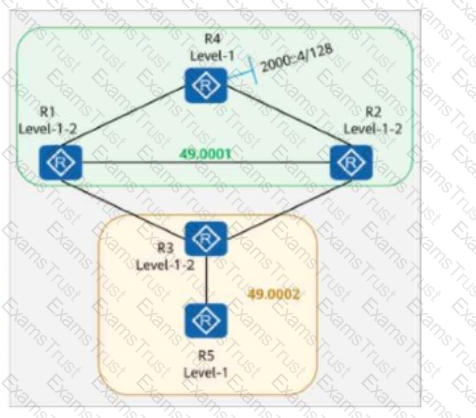
Which of the following routers have the route 2000::/64 in their routing tables?
If the display ospfv3 peer verbose command is run to check OSPFv3 neighbor information, the command output contains information such as the peer router ID, global unicast address of the peer interface, and neighbor status.
On the network shown in the figure, OSPF is deployed on R1 and R2. IS-IS is deployed on R2 and R3. To enable R1 to obtain the route to 10.0.3.3/32, ISIS routes are imported into OSPF on R2. In this case, the next hop address to 10.0.3.3/32 in the routing table of R1 is_____.
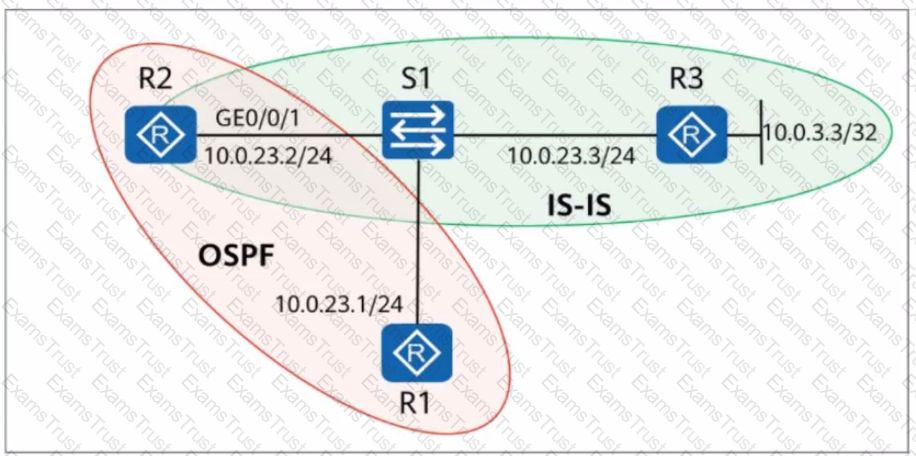
On an MPLS network, an LSR ID uniquely identifies an LSR. An LSR ID defaults to the IP address of a physical interface on a device and can be manually set to a loopback interface address.
Options:
On the OSPFv3 network shown in the figure, the LSDB of R2 contains ____ Router-LSAs. (Enter only digits.)

The figure shows the LSP information of R1 and R3 on an MPLS network. An administrator runs the ping -a 1.1.1.1 3.3.3.3 command on R1. Given this, which of the following statements is true?
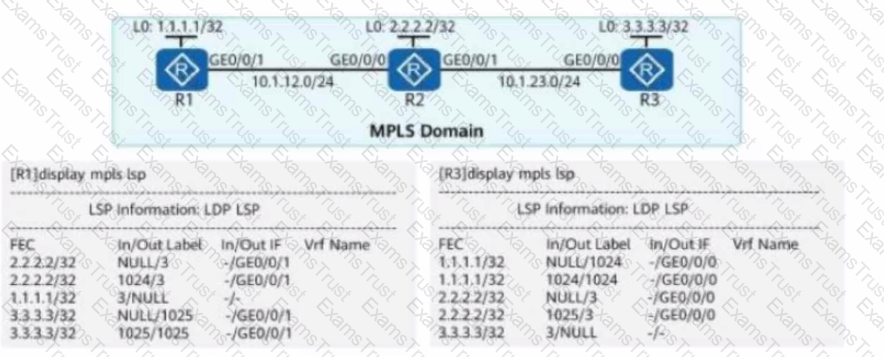
On the IS-IS IPv6 network shown in the figure, multi-topology is enabled on all routers.
The IPv6 address of Loopback0 on R4 is 2000::4/128.
The command ipv6 summary 2000::/64 level-1-2 is configured in the IS-IS process of R4.
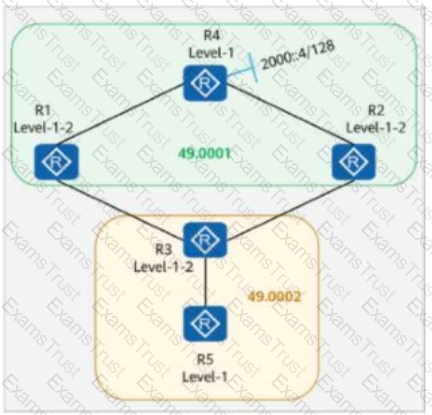
Which of the following statements is false?
Large and midsize enterprise networks can be divided into the access layer, aggregation layer, and core layer. Network engineers need to work out a migration solution for the operations to be performed at any layer, as long as the operations affect services on the live network.
Options:
On a broadcast network, routers (including non-DIS routers) of the same level on a network segment can establish neighbor relationships. In the implementation of BFD for IS-IS, however, BFD sessions are established only between a DIS and non-DIS routers, not between non-DIS routers.
On the OSPF network shown in the figure, areas 1, 2, and 3 are common areas. The IP address of Loopback0 on R5 is 10.0.5.5/32, and OSPF is enabled on the interface using the network command.
ACL 2000 (with the matching rule shown in the figure) is configured on all routers. If the command filter 2000 import is run in area 0 (where R1, R2, and R3 reside), which of the following routers do not have the route 10.0.5.5/32 in their routing tables?
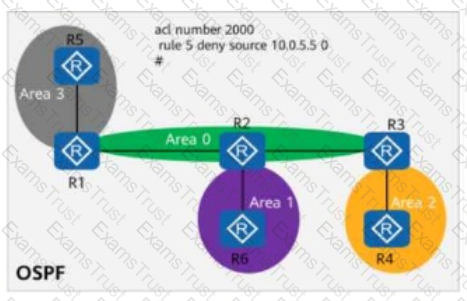
To protect a device against the attacks of forged BGP messages, you can configure GTSM to check whether the TTL value in the IP message header is within the specified range. If the peer x.x.x.x valid-ttl-hops 100 command is configured on a device, the valid TTL value range of the detected message is [155, 255].
On the network shown in the figure, PC1 and PC2 are connected to the same switch (SW1) and belong to the same VLAN.

Which of the following are possible causes of a communication failure between PC1 and PC2?
Options:
A network device has established an OSPF neighbor relationship with another device. The figure shows the configuration of GE0/0/0 on the network device.
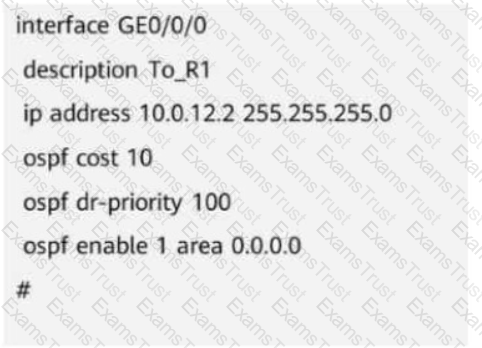
Which of the following commands would NOT affect the OSPF neighbor status of the interface?
To support the processing and calculation of IPv6 routes, IS-IS adds a new NLPID to TLV 129. The NLPID is an 8-bit field that identifies network layer protocol packets. Which of the following is the NLPID of IPv6?
BGP allows you to use the filter-policy acl-number import command to filter received routes. The value of ad-number ranges from 2000 to 3999.
BFD for OSPF refers to the association of BFD with OSPF to speed up OSPF's response to network topology changes. The OSPF neighbor relationship can enter the Full state only after the BFD session goes up. The OSPF neighbor relationship can go down only after the BFD session goes down.
After basic QinQ is configured on an interface of a switch, the switch adds the default VLAN tag of the interface to packets only when the interface receives tagged packets. In this way, the VLAN space is expanded.
A network engineer checks LLDP neighbor information on R1. The output is shown below.
Which of the following statements are true?
LLDP Output:
yaml
CopyEdit
------------------------------------------------
GE0/0/0 has 1 neighbor(s):
Neighbor index: 1
Chassis type: MAC Address
Chassis ID: faed-ad04-0010
Port ID subtype: Interface Name
Port ID: GE0/0/0
System name: R2
System description: Huawei YunShan OS
Version 1.22.01 (AR8000 V100R002C200)
Copyright (C) 2021-2022 Huawei Technologies Co., Ltd.
HUAWEI AR8140-12G10XG
System capabilities supported: bridge router
System capabilities enabled: bridge router
Management address type: IPv4
Management address: 192.168.1.1
Expired time: 107s
Both VLAN aggregation and MUX VLAN are deployed on the enterprise network shown in the figure, and all switch interfaces connected to terminals are access interfaces. Given this, match PCI to PC4 with the hosts or servers that they can access on the network. (Note: A host cannot be matched with itself. For example, PCI cannot match PCI.) (Tokens can be reused.)
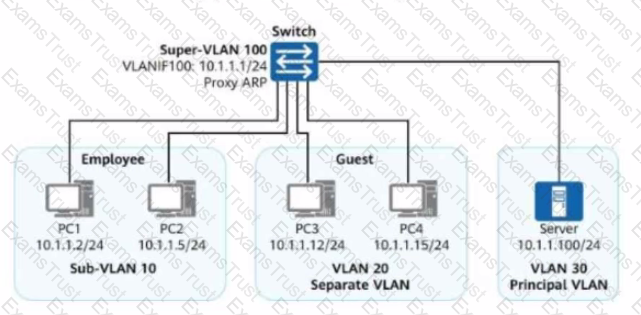
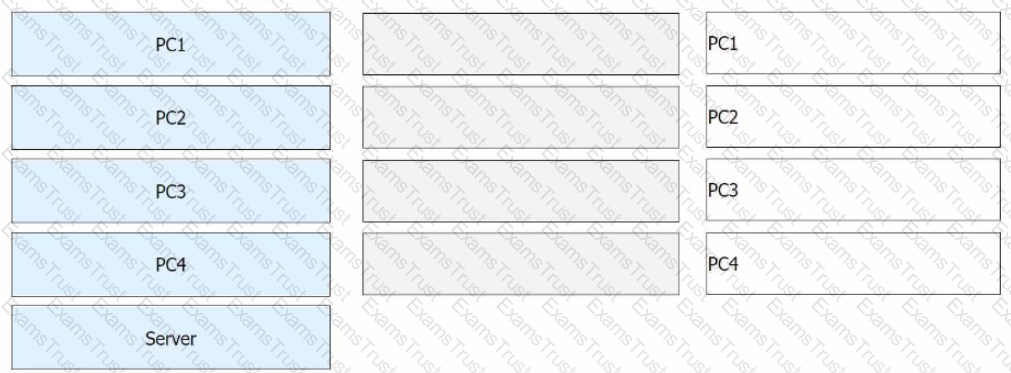
On an enterprise network shown in the figure, EBGP is deployed between CEs and PEs.
CE1 sends a VPN route to PE1.

Which of the following statements are false?
Options:
There are multiple types of MAC address entries on a switch. Which of the following entries are manually configured and cannot be aged out?
On the network shown in the figure, IS-IS runs on R1, R2, R4, and R5, and the area ID is 49.0001. IS-IS runs on R3 and R6, and the area ID is 49.0002. In AS 65000, R1, R3, R4, and R6 each establish iBGP peer relationships with R2 and R5. R2 and R5 are RRs (Route Reflectors), and R1, R4, R3, and R6 are clients. The iBGP peer relationships are established using Loopback0 on each router, and the router ID is 10.0.0.X/32, where X is the number of the router. R1 and R4 import the external route 192.168.1.0/24 to BGP through the import-route command, and R3 and R6 import the external route 192.168.2.0/24 to BGP through the import-route command. Which of the following statements are true?
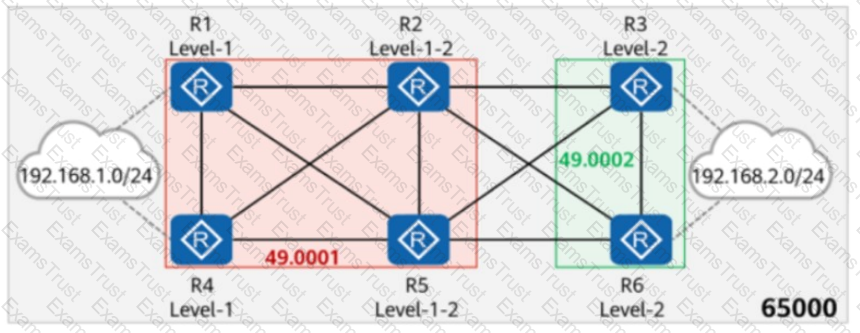
IPSG is a source IP address filtering technology based on Layer 3 interfaces. It prevents malicious hosts from forging authorized hosts' IP addresses to access authorized network resources.
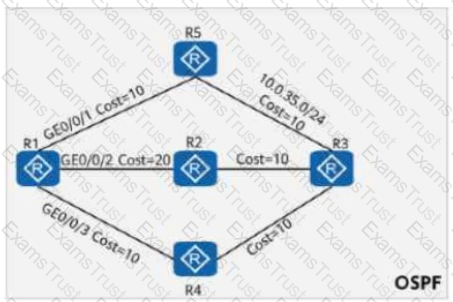
On the OSPF network shown in the figure, the cost values of links are marked. OSPF IP FRR is enabled on R1, and the maximum load-balancing 8 command is configured in the OSPF process. Which of the following is the cost value of the route 10.0.35.0/24 in the routing table of R1?
On the network shown in the figure, IS-IS IPv6 runs on R2, R6, and R3, and the IPv6 address of Loopback0 on R6 is 2000::6/128. OSPFv3 runs on other links. Area 1 is a stub area, and Area 2 is an NSSA. IS-IS routes are imported to OSPFv3 on R2 and R3. Which of the following statements are false?
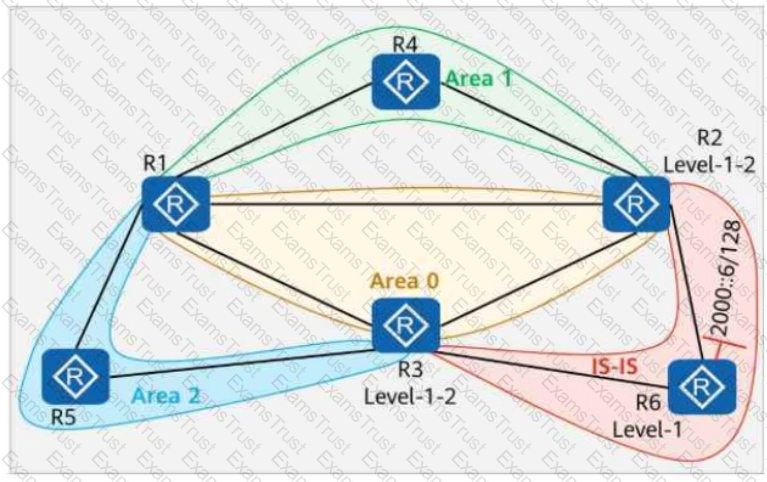
Which of the following is not included in OSPF Hello packets?
Options:
On the OSPFv3 network shown in the figure, area 1 is a common area. Which of the following statements are true?
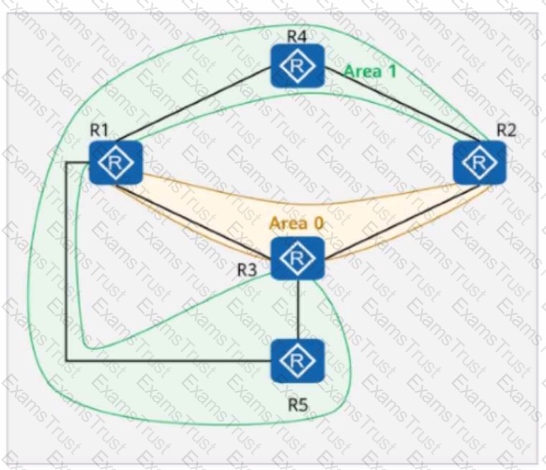
On the OSPF network shown in the figure, area 1 is a stub area, area 2 is a totally stub area, and area 3 is an NSSA. Which of the following LSAs does not exist in areas 1, 2, and 3?
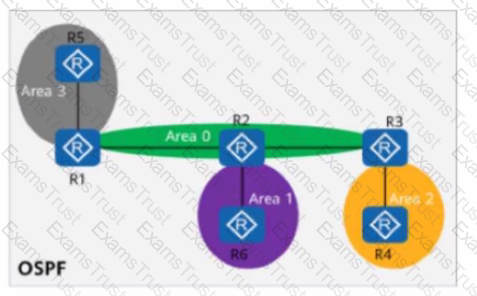
R1 forwards a packet with the destination IP address of 4.4.4.4 on an MPLS network.
Some LSP (Label Switched Path) information of R3 is shown in the figure.
During packet transmission, which of the following devices perform MPLS label operations?
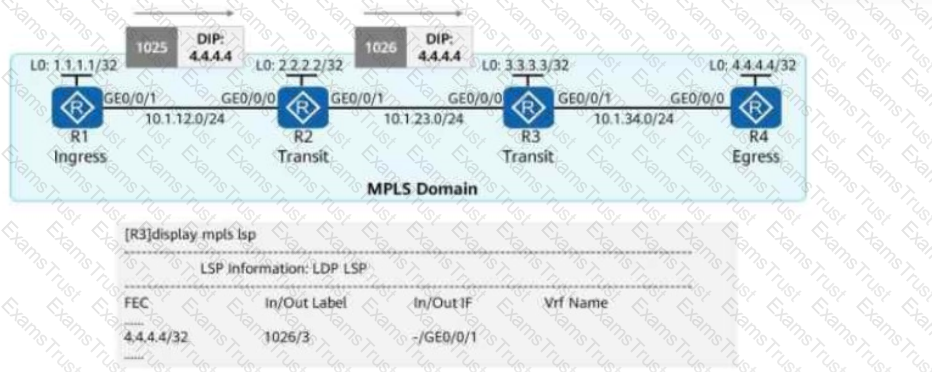
On the OSPF network shown in the figure, drag the values on the left to the correct positions so that:
Traffic from PC1 to PC2 follows the path:PC1 -> R1 -> R3 -> R2 -> PC2
Traffic from PC2 to PC1 follows the path:PC2 -> R2 -> R1 -> PC1
Which of the following OSPF cost values should be assigned to Cost-A, Cost-B, and Cost-C to achieve this routing behavior?
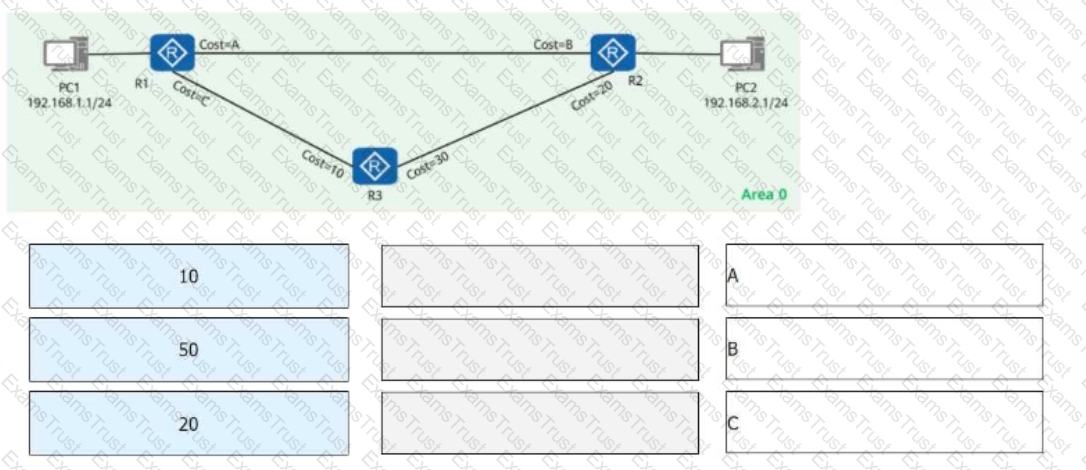
On the OSPFv3 network shown in the figure, area 1 is an NSSA. R1 imports the external route 2000::1/128 to OSPFv3. Which of the following LSAs does not exist in area 1?
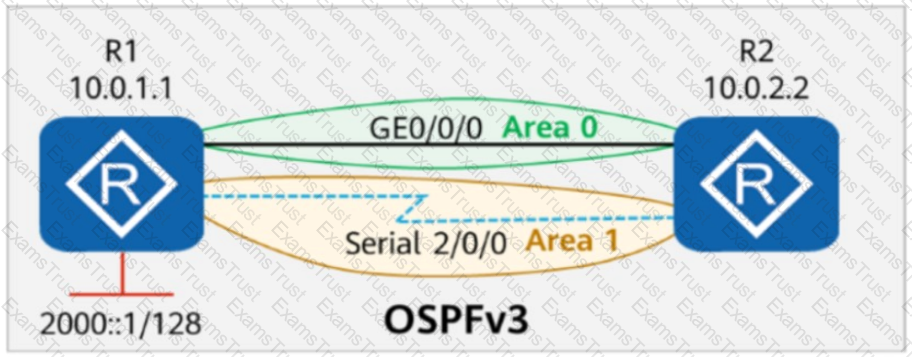
On the OSPFv3 network shown in the figure, the IPv6 address of Loopback0 on R3 is 2000-3/128, and OSPFv3 is enabled. Which of the following statements are true?
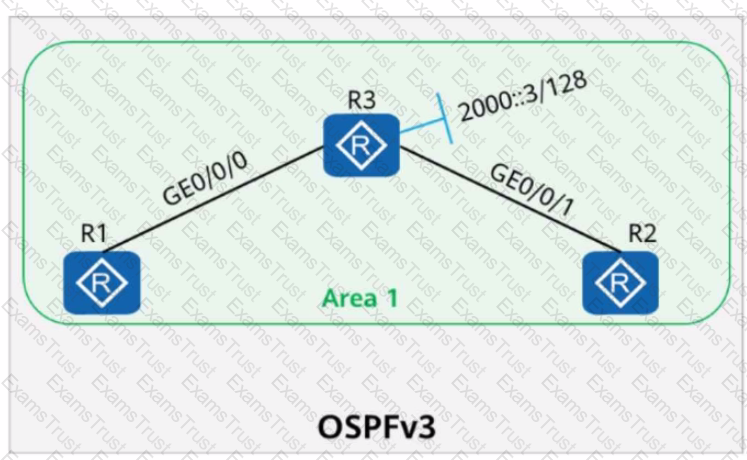
On the ISIS network shown in the figure, R1 imports a default route using the default-route-advertise always level-1 command. In this case, R3 can learn this default route through IS-IS.
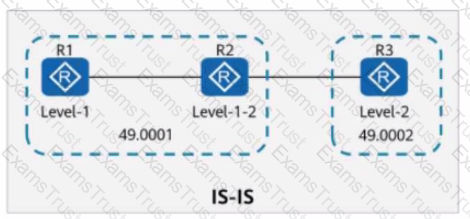
On an enterprise network shown in the figure, if CE2 is dual-homed to PE2 and PE3, a routing loop may occur during the exchange of Type 5 LSAs (External LSAs in OSPF).
To prevent the loop, the route-tag command can be run on PE2 and PE3.
In this way, if the route tag of the route received by PE3 is the same as that configured locally, the route is ignored.

Is this statement True or False?
On the network shown in the figure, the network administrator deploys DHCP snooping on the switch to defend against bogus DHCP server attacks.
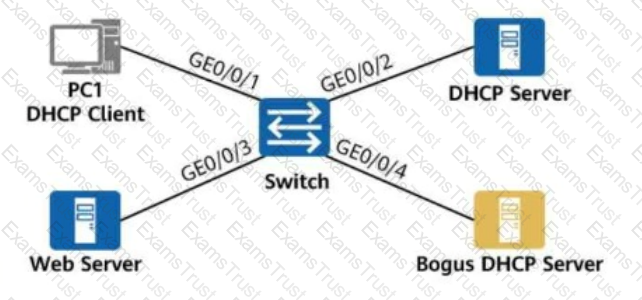
Which of the following interfaces should be configured as the DHCP trusted interface?